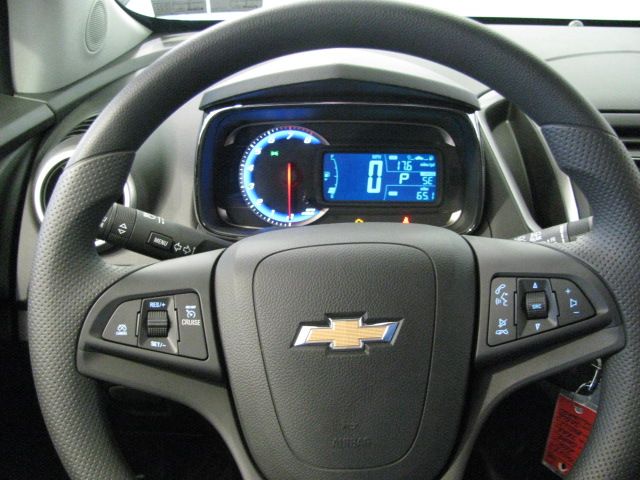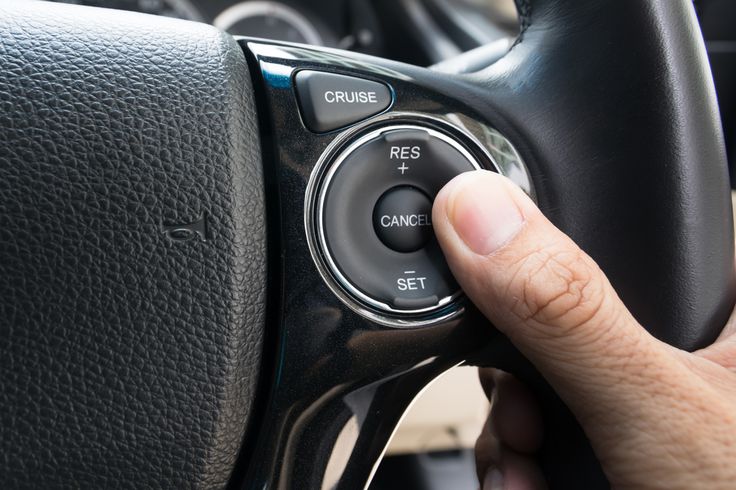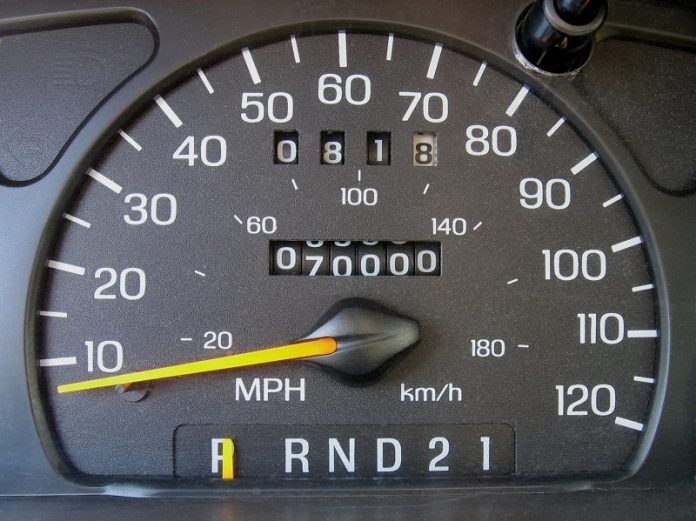Does Cruise Control Save Gas?
Over 70 years since it was invented by Ralph Teetor, cruise control has become standard on most new-generation cars. Besides providing a comfortable and safe driving experience, cruise control is commonly assumed that it will save more gas.
It is thought that by maintaining a steady speed, the cruise control system will save fuel consumption more effectively than if the driver manually keeps their foot on the pedal. So “Does Cruise Control Save Gas?” The answer is “Yes or No”. Let us make clear this question in the article today!
How Does Cruise Control Work?

Cruise control is also known by names such as: speed control or auto cruise. It is a technology that automatically maintains speed, allowing the driver to control the vehicle at a specific speed, by controlling the connection of the accelerator. At that time, you do not need to use the accelerator or take your foot off the pedal, but you can still be completely assured that your car is still running stably. Most cars have control buttons either above or behind the steering wheel.
Cruise Control takes speed measurements from various parts of the engine to gauge how fast your car is moving at any given time. With the data collected and the specific speed set by the driver, the system will automatically adjust the speed to match the input data and the amount of fuel injected into the combustion chamber. After activating, all you need is to focus on steering. When encountering an obstacle, the driver steps on the brake and the car automatically disables cruiser control, returning to the normal driving condition.
In addition, for luxurious cars, manufacturers also upgrade this system with a speed limiter feature. Specifically, when the Cruise Control function is activated, if your car goes downhill, the vehicle will actively slow down. Besides, drivers can also set a speed limit so that the vehicle does not exceed the allowed level when traveling in dense areas. Other modern cars also are equipped with Adaptive Cruise Control. When driving, your car encounters a slower vehicle ahead, the system will automatically slow down and accelerate again when the vehicle in front moves at a faster speed.
If you are driving a long distance, you will get tired of having to keep your foot on the accelerator for several hours continuously. With outstanding ability, the Cruise Control system will make your journey more comfortable.
Does Using Cruise Control Save Gas?
For a long time, cruise control has been considered a secret to helping drivers save fuel. Is it just a myth or could it be a fact? and “Is cruise control better for gas mileage?”
Many drivers assume that using the cruise control system will reduce fuel consumption, thereby saving the cost. Now let’s take a closer look at this.
In many cases, using a cruise control system can actually increase a car’s fuel economy by up to 5-15%. Vehicles consume the most fuel during acceleration, so the best way to achieve maximum fuel economy is to maintain speed. This is quite difficult to do if only using the accelerator as usual. However, your car can easily maintain a specific speed through the use of cruise control. In some cases, even the speed difference incurred when going uphill or downhill is quite small when using the cruise control system.
However, please note that Cruise Control is speed control (auto cruise) not fuel consumption control. The system’s main is to maintain the speed set by the driver, regardless of other factors. Therefore, when encountering a high uphill road, the car will increase the throttle to compensate for the deceleration due to gravity. That means more fuel consumption.
The answer to the question “Is cruise control fuel-efficient?” Cruise control is really effective when used by the driver in driving conditions at a steady speed, on highways, or on flat roads with speed limits. On the contrary, if you are driving a car on busy roads, or on mountain terrain, you have to constantly brake to change the speed of the car, then activating the cruise control system will not save fuel.
Is Cruise Control Bad For Your Car?
Our answer is “No”. Many people think that using cruise control will damage the transmission. Contrary to this belief, using cruise control does not cause the transmission to wear out quickly. In fact, regular use of cruise control can actually reduce wear and tear on the driveline. That’s because the car has the least wear and tear when operating at a steady, constant speed for long periods of time.
Many people mistakenly think that the car gearbox will be damaged when the vehicle’s cruise control system causes the engine rpm to spike during the downshift. However, that is not the case at all, as downshifting is a safe method to reduce speed quickly for any type of vehicle.
>> Related post: When You Should & Shouldn’t Use Cruise Control While Driving
Notes When Using The Cruise Control System.

Using the cruise control system contributes to the driver’s comfort and relaxation when the accelerator is “Free”. However, in reality, using Cruise Control also contains many potential risks and can be counterproductive in terms of fuel consumption if driving is not proper. Therefore, drivers should pay attention when using Cruise Control to ensure safety and fuel efficiency.
Consider traffic conditions before activating Cruise Control
During long driving, when going on highways, drivers need to pay attention to the speed limit signs, install Cruise Control for the car to move to release the accelerator, create comfort and give fuel efficiency. However, if drivers activate Cruise Control when going through crowded roads or traffic jams can be potentially dangerous. Because the driver will not be able to fully control the vehicle or lack the initiative when facing unexpected situations.
Do not use Cruise Control on certain roads.
When driving the car through steep road, and slippery roads, the driver should not activate the Cruise Control system. According to experts, the driver’s accelerator is “released”, which can cause the driver’s response to be slower than normal. When operating, Cruise Control will maintain the specific speed, helping the vehicle to move stably. However, when the vehicle is driving on slippery roads or in urgent turns. If the driver does not adjust the speed appropriately, it will easily cause your car to skid and deviate from the lane. Therefore, it is best not to activate Cruise Control in these situations.
Pay attention and concentration
Cruise Control is not an auto-driving system, so the driver needs to observe and maintain focus. After activating the Cruise Control system, the driver should notice the traffic condition as well as other vehicles on the road to handle any unexpected situations.
The driver can adjust the speed of the vehicle through the control buttons usually indicated on the steering wheel. The accelerator pedal operation is also released accordingly, but your feet must always be in a ready position to apply the pedal. This will contribute to helping the driver react more quickly and safely. When encountering unexpected problems while minimizing the risk of mistakenly stepping on the accelerator.
Choose the right speed
Using Cruise Control to be effective depends on speed. The usual suitable speed level is about 60 – 80km/h depending on the type of road. To achieve this speed, technical experts said that it is necessary to pay attention to rpm. So at 1,500 rpm or less for popular cars is the best time to achieve the best effect.
As the usual way, the driver wants to run at a speed of 60km/h. And press hard on the accelerator to increase the speed from standing still or at low speeds. To be able to use Cruise Control to save fuel. The driver should choose to slowly step on the accelerator to the right level. The car will slowly accelerate steadily, even though it takes longer to reach 60km/h. Please step on the accelerator lightly. Hold this level until you reach the threshold of 60, and then press activate.
>> Read more: What Is Adaptive Cruise Control? Is It Worth Paying For?
Final Thoughts
Come to a conclusion for the topic “Does Cruise Control Save Gas?” We want to make it clear one more time. You should use Cruise Control on the flat road or the highway. Because it will bring you a more interesting experience and save more fuel. But in other cases like steep roads, traffic congestion…you shouldn’t activate the utility.
Using cruise control is a great way to control your speed while driving on the road. Note, however, that you should not use cruise control if you are likely to be fatigued when driving. Think of the Cruise Control system as a simple utility that helps the driver save energy. In this way, you will enjoy your journeys in comfort and safety.














